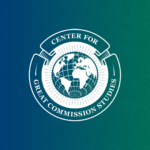By Stephen Stallard
It has been a brutal year for NYC. The city in which I live, the city that I love, has taken a beating. In the Spring we survived the first wave of the Coronavirus, even as nearly 25,000 of our neighbors did not. We endured a 79-day lockdown. We grappled with racial injustice. We witnessed protests and looting, and a sharp spike in violent crime. Shut up in our apartments, we were traumatized by the eerie wail of ambulance sirens all throughout the night. We could not sleep because of the fireworks unleashed throughout the city. We felt buzzed by the helicopters that hovered overhead. Trash accumulated on the streets, and our quality of life deteriorated. Now, we are in a second wave and bracing for more lockdowns.
Through it all, our neighborhoods kept changing, because people kept leaving. Some left because they had lost their jobs, and New York suddenly offered few prospects. Some left because they could work remotely, and chose to live outside the city, where the cost of living was so much lower. For the first time, the dream of home ownership became a reality to many New Yorkers dispersed outside the city. Some left in search of safety, either from the virus or from the violence. Some left because they felt a pull towards family, and so they returned to their roots.
Based on change of address requests filed with the Post Office, and based on data from moving companies, it is clear that New York City is experiencing a remarkable exodus. Hundreds of thousands of people (possibly as many as half a million) have relocated from NYC since the pandemic began. I have seen this in the church that I pastor, as 20% of our members have permanently relocated (others have left semi-permanently).
Eventually, the pandemic will end, and we will emerge from this darkness. But when we do, we will discover that the City has changed. Our neighborhoods will look different. Urban centers like New York City might be disproportionately affected by the changes wrought by COVID. It is impossible to be certain how cities like New York will change. However, I would like to imagine what mission might look like in urban centers such as New York, Singapore, and Mexico City.
First, BIVO models of pastoring and planting will likely become the new normal. In the small church that I planted, offerings decreased by nearly 40% due to the COVID exodus. Churches across the city are scrambling to find funding. As a result, many pastors and planters will consider employment outside the church. Some organizations, like the SEND Network, already encourage planters to embrace a bi-vocational or co-vocational model. In hard-hit cities like New York, this will likely increase. Fragile churches in urban centers will have to embrace new approaches to funding their senior leadership.
Second, we will see the rise of creative approaches to mission. A pandemic brought out the best in the Church, and we have seen churches pivot to new methods and strategies, some almost overnight. Here in New York, we used digital streaming services to connect with people, wrote daily blogs during our long lockdown, led book clubs on Zoom, and met people in parks and on street corners. We partnered with food trucks to serve essential workers, distributed weekly “Boxes of Hope” to those who could not safely shop for groceries, and gave away thousands of facemasks. In the aftermath of a pandemic, churches might rediscover their missional identity by embracing creative, holistic approaches to mission.
There are opportunities all around us. We can serve our neighbors and bear witness to Jesus through job training programs, through health screenings, and through mental health awareness efforts. Churches must begin to think now about what ministry looks like after COVID. We cannot simply assume that everything will go back to normal. Here in NYC, we are preparing for the next normal. Whatever the future looks like, we must adapt, and creatively engage in the mission of disciple-making.
Third, urban Christians will focus on rebuilding their neighborhoods, not just on rebuilding their churches. In the neighborhood in which I live, businesses are closing, school funding is in jeopardy, and non-profits are fighting for survival. We will need to heed Jeremiah’s call to “seek the peace of the city” (Jeremiah 29:7). For those who remain, the challenge will be great. Yet, we will have an opportunity, like Nehemiah, to repair that which is broken. Neighbors will have to band together to rebuild communities. We should assume that help is not coming from the outside. And we should roll up our sleeves and get to work. As we do, we will have repeated opportunities to bear witness to the lordship of Jesus and to call people to faith in his name.
The famed missionary Lesslie Newbigin “retired” to Britain and pastored a small urban church. He experienced little numerical success, and he acknowledged that “The church remains small and vulnerable.” That is how many urban churches were before COVID, and the pandemic has only accelerated that trend.
However, in the aftermath of the Coronavirus, churches will have opportunities to rethink their strategy and to renew their commitment. As they do, it will be important to remember that it is Jesus who builds his Church, and not even Hell can stand against it.

